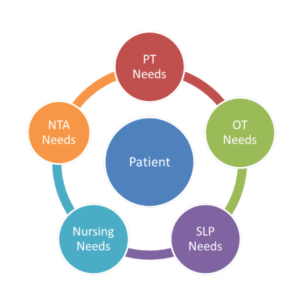New initiative looks for solutions to LTSS challenges
Several former government officials and policy experts are coming together in an effort to find a “politically viable and fiscally sustainable” way to improve the financing and delivery of long-term services and supports (LTSS) for the country’s aging population and working-aged people with disabilities.
“What has become more and more obvious…is that most people do not want to be in an institution—in a nursing home or whatever,” Alice Rivlin, PhD, one of those involved with the Bipartisan Policy Center’s (BPC’s) Long-Term Care Initiative and former director of the Congressional Budget Office, said during a press conference at which the initiative was announced. “So the big challenge—while we need skilled nursing facilities and other kinds of institutions—the big challenge is, how do we reconfigure communities and families so that they can keep older and disabled people in their homes as long as possible without bankrupting the country? So that’s what we’re going to try to grapple with here.”
In addition to Rivlin, co-author of the 1988 book Caring for the Disabled Elderly: Who Will Pay?, the organization’s new initiative is being led by former Senate Majority Leaders Tom Daschle and Bill Frist, MD, and former Secretary of Health and Human Services Tommy Thompson, who recently was appointed a senior fellow of the BPC. They have released a white paper, “America’s Long-Term Care Crisis: Challenges in Financing and Delivery,” which identifies the major challenges related to the financing and delivery of LTSS for seniors and those with disabilities who are aged fewer than 65 years and suggests a framework for the conversation going forward.
“We recognize that policy solutions are not going to be easy,” Daschle said, noting that legislative and regulatory changes, as well as private and public input, will be required.
Likening the challenges—a growing older population, a decreasing number of caregivers, long-term care costs that are “devastating” to families and limited private insurance options to cover services—to an impending tidal wave, Frist said: “We fundamentally believe that finding solutions to these challenges is not only achievable…but also imperative. Policymakers simply have to lay the groundwork for action now before millions of baby boomers begin to need that assistance.”
Also during the press conference, which was held at the BPC in Washington, D.C., Thompson said: “I am absolutely confident that we can come up with some very good solutions. And then we’re going to have to figure out a way we can take this bipartisanship attitude across the street over on Capitol Hill and get some solutions worked out as well.”
Solutions to the issues have been elusive, Rivlin said, “because this question of how do we provide long-term supports for people who need it is at the intersection of family and private responsibility and public responsibility. And that’s a difficult intersection for ideological parties to come to grips with. Stereotypical Democrats say it's a public responsibility. Stereotypical Republicans say it's primarily a private responsibility. It's both.”
The initiative will focus on integrating and emphasizing the role of long-term care within organized systems of care delivery and payment, and it also will explore sustainable approaches for financing at the individual, family, state and national levels. Thompson said that the federal and state governments have done “a great job” at finding ways for people to obtain more healthcare services at home if they want to do so. “But there still is going to be a need for skilled nursing services, and we still have to look at the financial implications,” added the former Wisconsin governor.
The work will build on BPC Health Project’s recent Health Care Cost Containment Initiative, which released a broad set of recommendations for improving quality and containing cost growth across the entire healthcare system in its report “A Bipartisan Rx for Patient-Centered Care and System-Wide Cost Containment” as well as the recommendations put forth by the federal Commission on Long-Term Care and a LeadingAge task force.
A final report of policy recommendations from the Long-Term Care Initiative, accompanied by a quantitative analysis of budget and distributional impacts, will be released later this year.
The initiative is supported by a grant from The SCAN Foundation.
I Advance Senior Care is the industry-leading source for practical, in-depth, business-building, and resident care information for owners, executives, administrators, and directors of nursing at assisted living communities, skilled nursing facilities, post-acute facilities, and continuing care retirement communities. The I Advance Senior Care editorial team and industry experts provide market analysis, strategic direction, policy commentary, clinical best-practices, business management, and technology breakthroughs.
I Advance Senior Care is part of the Institute for the Advancement of Senior Care and published by Plain-English Health Care.
Related Articles
Topics: Articles , Executive Leadership , Medicare/Medicaid , Regulatory Compliance









